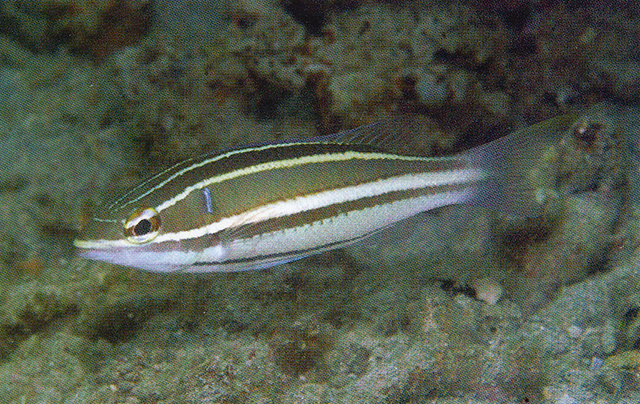| Nemipteridae (Threadfin breams, Whiptail breams) |
| 20 cm TL (male/unsexed) |
|
reef-associated; marine; depth range 2 - 20 m |
| Western Central Pacific: Philippines, Indonesia and Singapore. This species has been previously confused with Pentapodus trivittatus. |
|
Dorsal spines (total): 10-10; Dorsal soft rays (total): 9-9; Anal spines: 3-3; Anal soft rays: 7-7. Head scales reaching forward to between level of posterior and anterior nostrils. Suborbital naked. Lower limb of preopercle with 2 or 3 scale rows. Pelvic fins moderately long, reaching to or almost to level of anus. Axillary scale present. Color: Upper body brown, white on ventral surface. This species is easily distinguished from P. trivittatus by the head scales extending forward to the nostrils, the absence of scales on the suborbital, and presence of a white bar on the upper margin of the opercle. |
| Solitary or in groups in shallow silty coral reef areas (Ref. 90102). Feeds on small fishes, crustaceans (shrimps, caprellid amphipods) and polychaete worms. |
|
Least Concern (LC); Date assessed: 16 July 2020 Ref. (130435)
|
| harmless |
|
Source and more info: www.fishbase.org. For personal, classroom, and other internal use only. Not for publication.

